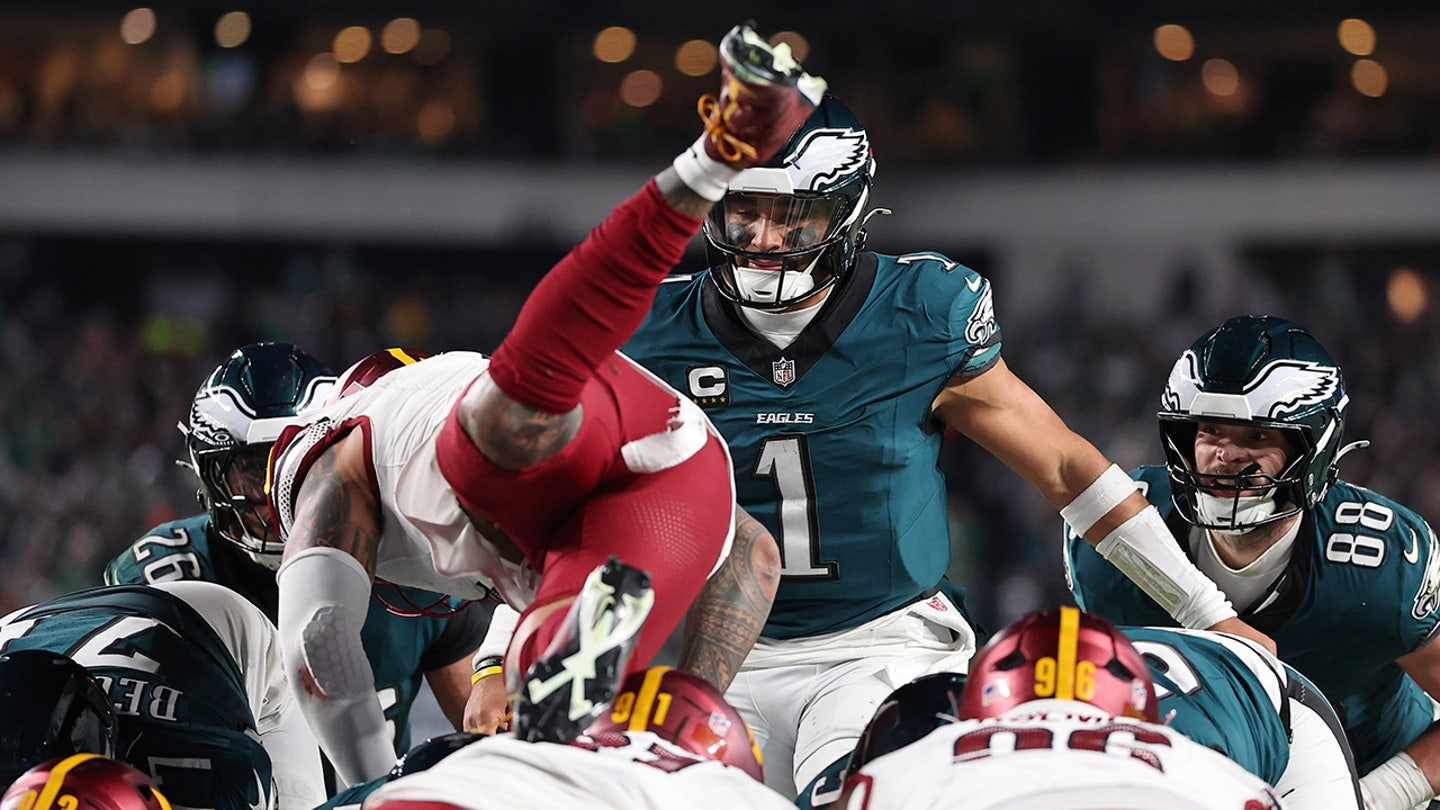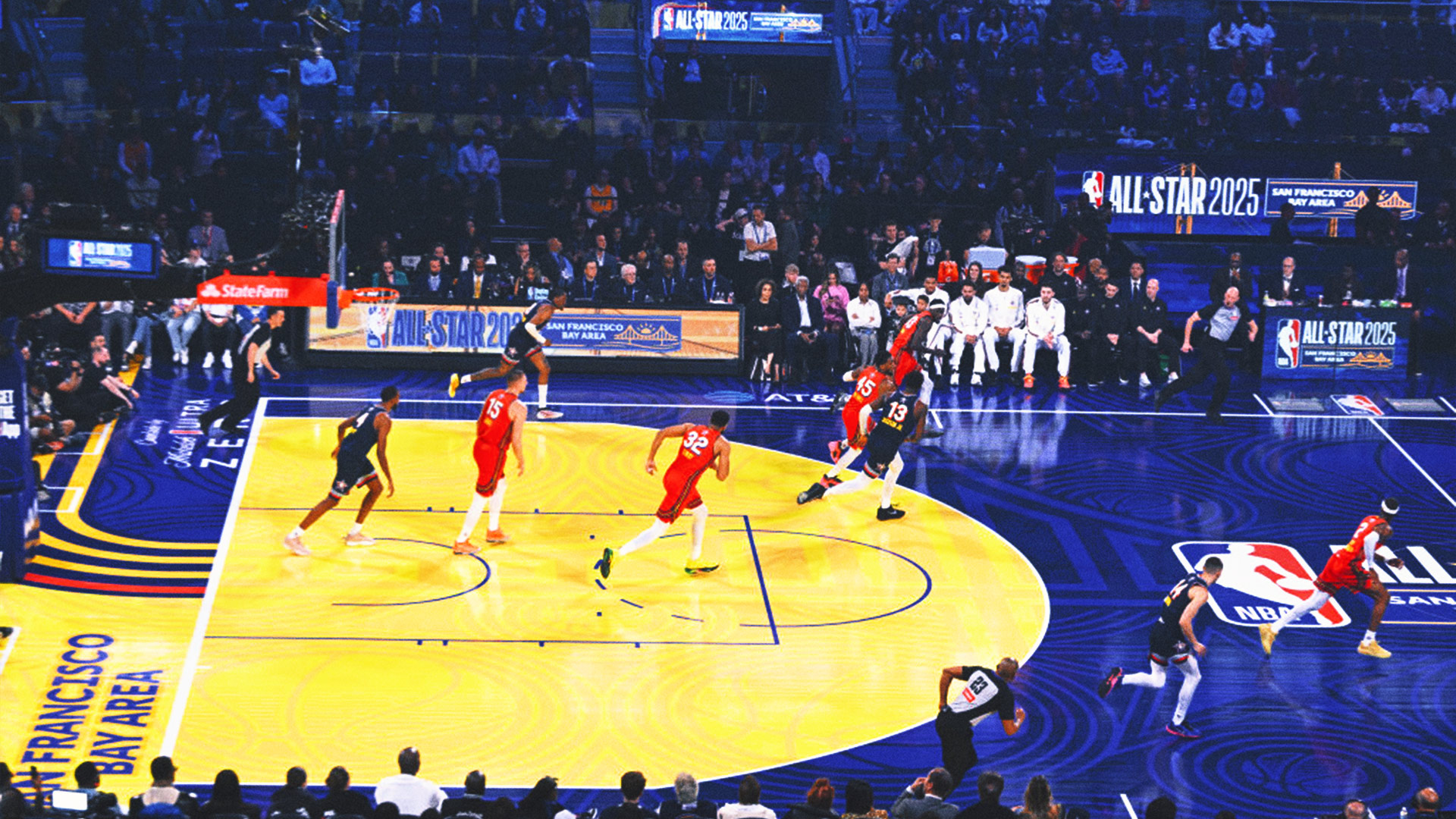
Robot umpires approved for MLB in 2026 as part of challenge system
Entities mentioned:
- Major League Baseball: Innovation, Control, Professional pride
- MLB Competition Committee: Duty, Influence, Professional pride
- Rob Manfred: Leadership, Innovation, Legacy
- MLB Players: Competitive spirit, Fairness, Professional pride
- Umpires: Professional pride, Accuracy, Job security
Article Assessment:
Credibility Score: 85/100
Bias Rating: 50/100 (Center)
Sentiment Score: 65/100
Authoritarianism Risk: 30/100 (Generally Democratic)
Bias Analysis:
The article presents a balanced view of the new system, including perspectives from various stakeholders. It provides factual information and statistics without favoring any particular side of the debate.
Key metric: Accuracy of Ball/Strike Calls
Let me tell you something - this is a GAME-CHANGER, folks! Major League Baseball is stepping up to the plate with a revolutionary move that's going to shake up America's favorite pastime. The introduction of robot umpires is like bringing in a star closer in the 9th inning - it's all about precision and getting the job done right. But make no mistake, this isn't a complete substitution. It's more like adding a designated hitter to the lineup - human umps are still in the game, but now they've got some high-tech backup. This challenge system? It's like instant replay on steroids, giving teams a chance to contest those crucial calls that can make or break a game. We're talking about a whole new level of strategy here, folks. Managers will need to be as sharp as a cleanup hitter eyeing a fastball, deciding when to pull the trigger on those challenges. And let's not forget about the catchers - their framing skills are still in play, like a defensive specialist who can turn the tide of a game without ever swinging a bat. This is the kind of forward-thinking that keeps baseball ahead in the sports world's pennant race!

Super Bowl champion Nick Foles credits AI for getting him into fantasy football
Entities mentioned:
- Nick Foles: Enthusiasm, Curiosity, Recognition
- IBM: Innovation, Competitive spirit, Influence
- ESPN: Competitive spirit, Innovation, Influence
- NFL: Competitive spirit, Legacy, Influence
Article Assessment:
Credibility Score: 75/100
Bias Rating: 55/100 (Center)
Sentiment Score: 75/100
Authoritarianism Risk: 20/100 (Strongly Democratic)
Bias Analysis:
The article presents a balanced view of AI in fantasy football, quoting directly from Foles and explaining the technology. While it leans slightly positive towards AI adoption, it doesn't show strong political leanings.
Key metric: Technology Adoption in Sports
Ladies and gentlemen, we're witnessing a GAME-CHANGING PLAY in the world of fantasy football! Super Bowl MVP Nick Foles is stepping up to the plate, embracing AI like a quarterback reading a defense. This is the kind of fourth-quarter move that separates the champions from the benchwarmers! IBM and ESPN are bringing their A-game, folks, transforming fantasy football into a high-stakes chess match with AI as the ultimate coach. We're talking about a seismic shift that's giving everyday fans the analytical firepower of an NFL front office. It's like having a whole scout team in your pocket! This AI playbook is leveling the playing field, turning fantasy rookies into seasoned veterans overnight. I'm telling you right now, this is the kind of technological Hail Mary that could redefine how we engage with America's favorite sport!

NFL looks to 'officiate it tight' as Chiefs game review video renews 'tush push' scrutiny: report
Entities mentioned:
- NFL: Control, Professional pride, Fairness
- Philadelphia Eagles: Competitive spirit, Ambition, Innovation
- Kansas City Chiefs: Competitive spirit, Professional pride
- Jalen Hurts: Competitive spirit, Determination
- Ramon George: Professional pride, Duty, Fairness
- Dean Blandino: Professional pride, Frustration, Fairness
Article Assessment:
Credibility Score: 75/100
Bias Rating: 50/100 (Center)
Sentiment Score: 45/100
Authoritarianism Risk: 30/100 (Generally Democratic)
Bias Analysis:
The article presents multiple viewpoints, including the NFL, teams, and analysts. It balances the controversy with factual information about rule enforcement and play statistics.
Key metric: NFL Rule Enforcement Consistency
Let me tell you something - this 'tush push' controversy is HEATING UP like a fourth quarter showdown! The Eagles are running their offense like a well-oiled machine, but the NFL refs are struggling to keep up with the play clock! It's like watching a heavyweight boxing match where one fighter keeps dancing on the edge of the rules. The league office is stepping into the ring now, folks, trying to tighten up the officiating like a coach adjusting defensive schemes mid-game. But here's the kicker - this play is so quick, so precise, it's like trying to catch a cheetah with a butterfly net! The Eagles are playing chess while everyone else is playing checkers, and it's putting the officials in a real pickle. This is the kind of strategic innovation that separates the champions from the contenders, but it's pushing the boundaries of what the rulebook can handle. We're watching a battle between cutting-edge tactics and the integrity of the game, and I'm telling you right now, something's gotta give!

‘Harder than losing in basketball:’ NBA legend Derrick Rose on his chess obsession and how it could save lives
Entities mentioned:
- Derrick Rose: Enthusiasm, Determination, Legacy
- NBA: Competitive spirit, Recognition, Influence
- Magnus Carlsen's Freestyle Chess: Innovation, Recognition, Influence
- Judit Polgár: Professional pride, Influence, Legacy
Article Assessment:
Credibility Score: 85/100
Bias Rating: 50/100 (Center)
Sentiment Score: 75/100
Authoritarianism Risk: 15/100 (Strongly Democratic)
Bias Analysis:
The article presents a balanced view of the chess-NBA collaboration, featuring perspectives from both sports. It doesn't lean politically and focuses on the potential benefits of chess for athletes and youth.
Key metric: Youth Engagement in Cognitive Activities
Ladies and gentlemen, we've got a GAME-CHANGING play unfolding right before our eyes! NBA legend Derrick Rose is making a POWER MOVE into the world of chess, and let me tell you, this crossover is ELECTRIFYING! Rose is stepping up to the plate, not just as a player, but as a COACH for the next generation. He's bringing his championship mentality from the court to the chessboard, and it's a slam dunk for cognitive development! This collaboration between chess grandmasters and NBA stars is like watching the Dream Team take on the World's Best in a battle of minds. It's a fourth-quarter strategy that could change the game for kids in tough neighborhoods. Rose is calling a timeout on reactionary thinking and drawing up a new playbook for strategic decision-making. This is the kind of clutch performance that could save lives, folks! The NBA might have the physicality, but chess is bringing the mental toughness that could be the missing piece in the championship puzzle of life skills!

WWE star Jimmy Uso opens up about teaming with brother again for milestone match at Wrestlepalooza
Entities mentioned:
- Jimmy Uso: Competitive spirit, Pride, Professional pride
- Jey Uso: Competitive spirit, Ambition, Unity
- The Usos: Legacy, Competitive spirit, Recognition
- WWE: Innovation, Influence, Competitive spirit
- Aires Lifetune Zone Max: Innovation, Influence, Recognition
Article Assessment:
Credibility Score: 75/100
Bias Rating: 45/100 (Center)
Sentiment Score: 75/100
Authoritarianism Risk: 20/100 (Strongly Democratic)
Bias Analysis:
The article presents a balanced view of the event, focusing on facts and quotes from Jimmy Uso. It doesn't show clear political leanings, maintaining a neutral stance on the technology and event.
Key metric: Sports Entertainment Innovation
Let me tell you something - this is a GAME-CHANGING MOMENT in the wrestling world! The Usos are stepping back into the ring as a tag team, but this time they're not just facing opponents, they're taking on the invisible enemy of EMF radiation! It's like they're suiting up with high-tech armor for a futuristic sports battle! This is the kind of fourth-quarter play that separates the rookies from the champions. WWE is pulling out all the stops, bringing in cutting-edge technology to give these athletes the competitive edge. It's like they're creating a whole new playing field right before our eyes! The Usos are showing that championship mentality, ready to prove they've still got that tag team magic. They're not just competing against Breakker and Reed, they're competing against their own legacy! This match is going to be a test of endurance, skill, and adaptability in this EMF-free zone. I'm telling you right now, this could revolutionize the entire sport of professional wrestling! It's a whole new ball game, folks, and The Usos are ready to hit it out of the park!

Trump takes issue with NFL's 'ridiculous-looking' dynamic kickoff
Entities mentioned:
- Donald Trump: Competitive spirit, Righteousness, Influence
- NFL: Safety, Innovation, Professional pride
- Kaleb Johnson: Inexperience, Anxiety, Self-preservation
Article Assessment:
Credibility Score: 70/100
Bias Rating: 65/100 (Lean Right)
Sentiment Score: 30/100
Authoritarianism Risk: 35/100 (Generally Democratic)
Bias Analysis:
The article leans right by prominently featuring Trump's criticism and emphasizing negative aspects of the new rule. However, it does include some balanced information about the rule's impact and effectiveness.
Key metric: NFL Viewership and Engagement
Let me tell you something - this story is RIDICULOUS! The NFL has fumbled the ball big time with this new kickoff rule, and Trump is blitzing them hard! It's like they've completely changed the playbook in the middle of the championship game! The league thinks they're playing 4D chess, but they might just be shooting themselves in the foot. This new rule has turned one of the most exciting plays in football into a game of freeze tag! I'm telling you right now, this could be a game-changer for NFL viewership. Fans want to see high-octane action, not players standing around like they're waiting for a bus! And let's not forget about poor Kaleb Johnson - talk about a rookie mistake! This kid stepped up to the plate and struck out looking. It's plays like these that show just how confusing and potentially dangerous this new rule can be. The NFL needs to huddle up and rethink this strategy before they lose the crowd for good!

Green Bay’s Micah Parsons era starts after ‘super toxic’ offseason, Travis Hunter says he ‘can do more’: Sunday NFL Week 1
Entities mentioned:
- Micah Parsons: Competitive spirit, Ambition, Recognition
- Green Bay Packers: Ambition, Competitive spirit, Legacy
- Travis Hunter: Ambition, Determination, Professional pride
- Jacksonville Jaguars: Competitive spirit, Ambition, Innovation
- Pete Carroll: Legacy, Competitive spirit, Professional pride
Article Assessment:
Credibility Score: 75/100
Bias Rating: 45/100 (Center)
Sentiment Score: 75/100
Authoritarianism Risk: 20/100 (Strongly Democratic)
Bias Analysis:
The article presents a balanced view of multiple teams and players, focusing on performance and facts. There's no apparent favoring of specific teams or agendas, maintaining a neutral stance.
Key metric: NFL Team Performance
Let me tell you something - this NFL kickoff is ELECTRIC! The league's got a new playbook and the teams are coming out swinging! Micah Parsons, the defensive MVP, has traded in his star for some cheese, folks! He's bringing that championship mentality to Titletown and let me tell you, he came out of the gate like a bat out of hell! On his very first snap, he's putting more pressure on the Lions' QB than a placekicker with 3 seconds left on the clock! Meanwhile, down in Jacksonville, we've got a two-way phenom in Travis Hunter who's looking to rewrite the rulebook! This kid's got more positions than a yoga instructor! The Jags are playing 4D chess while everyone else is stuck in checkers! And let's not forget about Pete Carroll, the ageless wonder, stepping up to the plate in Las Vegas and knocking it out of the park on his debut! This is the kind of fourth quarter move that separates the champions from the also-rans! I'm telling you right now, this season is shaping up to be a barn-burner, and we're just getting started!

NBA Reportedly Finalizing Another New Format for This Season's All-Star Game
Entities mentioned:
- NBA: Innovation, Competitive spirit, Recognition
- Adam Silver: Professional pride, Duty, Influence
- Competition Committee: Duty, Professional pride, Enthusiasm
Article Assessment:
Credibility Score: 75/100
Bias Rating: 50/100 (Center)
Sentiment Score: 60/100
Authoritarianism Risk: 20/100 (Strongly Democratic)
Bias Analysis:
The article presents a balanced view of the proposed changes, citing official sources and providing context. It doesn't appear to favor any particular perspective, maintaining a neutral tone throughout the reporting.
Key metric: International Sports Diplomacy
As a social scientist, I analyze that this proposed change to the NBA All-Star Game format could significantly impact international sports diplomacy. By creating a structure that explicitly showcases international talent alongside U.S. players, the NBA is positioning itself as a global sport and potentially increasing its appeal and reach worldwide. This move could foster greater international engagement with basketball, potentially leading to increased global viewership, participation, and talent recruitment for the NBA. The format change also reflects the growing internationalization of the league, acknowledging the significant contribution of non-U.S. players to the sport's development and appeal.

Fighter pilots take directions from AI in Pentagon’s groundbreaking test
Entities mentioned:
- U.S. Fighter Pilots: Duty, Professional pride, Security
- Pentagon: Security, Competitive spirit, Influence
- Air Force: Security, Professional pride, Competitive spirit
- Navy: Security, Professional pride, Competitive spirit
- Raft AI: Ambition, Innovation, Recognition
- Shubhi Mishra: Ambition, Recognition, Influence
- Federal Aviation Administration (FAA): Security, Duty, Professional pride
- National Transportation Safety Board: Duty, Security, Professional pride
Article Assessment:
Credibility Score: 75/100
Bias Rating: 55/100 (Center)
Sentiment Score: 65/100
Authoritarianism Risk: 35/100 (Generally Democratic)
Bias Analysis:
The article presents a balanced view of the AI technology, discussing both its potential benefits and ethical concerns. While it leans slightly towards emphasizing the positive aspects, it also includes cautionary notes about human involvement in critical decisions.
Key metric: Military Technological Advantage
As a social scientist, I analyze that this article highlights a significant advancement in military technology, specifically in air combat management. The integration of AI into fighter pilot operations represents a potential paradigm shift in warfare strategy. This development could dramatically enhance the U.S. military's decision-making speed and accuracy in air combat scenarios, potentially providing a substantial edge over adversaries. However, it also raises ethical questions about the role of AI in life-or-death decisions and the future of human involvement in combat operations. The test's success suggests a trend towards increased AI integration in military operations, which could have far-reaching implications for national defense strategies, international military dynamics, and the nature of future conflicts. The emphasis on maintaining human oversight indicates a cautious approach to this technological integration, balancing innovation with ethical considerations.

Agriculture Secretary Demands U.S. Farmers Invent 5 New Melons By Friday
Entities mentioned:
- Brooke Rollins: Ambition, Competitive spirit, Fear
- U.S. Farmers: Obligation, Self-preservation, Professional pride
- U.S. Department of Agriculture: Control, Influence, Competitive spirit
- Japanese farmers: Innovation, Competitive spirit
- Chinese farmers: Competitive spirit, Innovation
Article Assessment:
Credibility Score: 25/100
Bias Rating: 50/100 (Center)
Sentiment Score: 30/100
Authoritarianism Risk: 65/100 (Authoritarian Tendencies)
Bias Analysis:
The article maintains a centrist position, mocking both government overreach and fears of international competition without favoring a particular political ideology. The satirical nature allows it to critique multiple sides of agricultural policy and international relations.
Key metric: Agricultural Innovation Index
As a social scientist, I analyze that this satirical article highlights anxieties about maintaining U.S. global competitiveness in agriculture through absurd demands for rapid innovation. It satirizes the pressure on farmers to constantly innovate, the fear of falling behind other nations technologically, and the government's role in driving agricultural policy. The unrealistic timeline and bizarre melon concepts underscore the often unreasonable expectations placed on the agricultural sector. This piece also touches on themes of economic nationalism and the weaponization of agriculture in trade wars, reflecting real-world tensions in international trade relations.